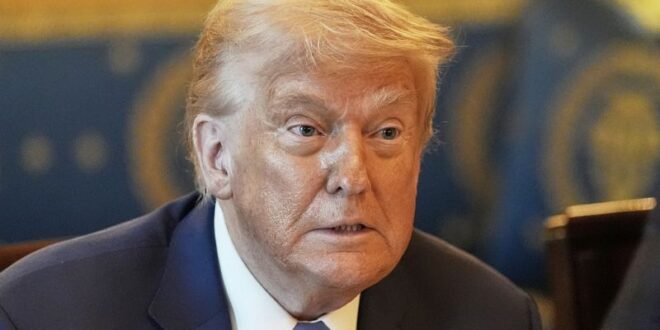Trump’s Tariff Strategy: A Bold Move with Uncertain Outcomes
President Donald Trump is once again implementing high tariffs on imported goods, a strategy that has historically caused market volatility and economic uncertainty. However, this time, he believes the approach will yield positive results, such as boosting factory jobs and driving economic growth in the United States. Despite his confidence, many economists remain skeptical, warning that these tariffs could lead to higher inflation and an economic slowdown.
A Shift in Approach
This week, Trump announced a new round of tariffs, marking a departure from previous methods. Instead of publicly displaying tariff rates during events like his “Liberation Day” speech, he opted for sending letters to foreign governments outlining the specific tax rates. This method, according to Trump, is more effective and powerful. He claims that it allows countries to read and understand the rates clearly, which range from 25% to 70%.
The shift comes after a brief period of tariff pauses, which ended on Wednesday. The previous 90-day pause had imposed baseline duties of 10%, but now, with higher rates set to take effect, there is increased anticipation and concern among global trading partners.
Three Possible Outcomes
Trump’s tariff strategy presents three potential outcomes, each with significant implications for international trade and his political legacy:
- Economic Growth: If the tariffs successfully boost U.S. manufacturing and reduce trade deficits, they could prove beneficial.
- Retreat from Tariffs: There is a possibility that Trump may back down before the August 1st deadline, similar to past instances where he delayed or modified his policies.
- Economic Damage: The most concerning scenario is that the tariffs could harm the economy, particularly affecting lower-income communities that supported him.
Political and Economic Implications
Trump’s approach contrasts sharply with traditional trade negotiations, which typically involve lengthy discussions and agreements over several years. His current method, characterized by sudden announcements and high tariffs, has raised concerns about its effectiveness and credibility.
Democratic Senator Ron Wyden criticized the approach, suggesting that Trump’s tactics have created a prolonged period of uncertainty. He argued that the lack of clear policy direction undermines the credibility of U.S. trade negotiations and reduces the willingness of other nations to engage in meaningful dialogue.
Market Reactions and Economic Forecasts
Despite the uncertainty, stock markets have remained relatively calm, with the S&P 500 showing little change after a Monday decline. Trump’s recent legislative success, including the passage of a major tax cut bill, has bolstered his confidence. Additionally, the easing of inflation has provided some relief, although economists warn that the long-term effects of the tariffs remain unclear.
Economists like Wendong Zhang from Cornell University note that while the gradual implementation of tariffs might normalize the 25% hikes, it could also risk normalizing what would otherwise be considered extreme measures. Others, like Desmond Lachman from the American Enterprise Institute, view the strategy as chaotic and lacking a coherent plan.
Revenue and Fiscal Impact
The administration estimates that tariff revenues could exceed $300 billion by the end of the year, significantly offsetting the costs of tax cuts. According to the Bipartisan Policy Centre, the U.S. government has already collected $98.2 billion in tariff revenues this year, doubling the amount from last year.
Treasury Secretary Scott Bessent emphasized that the projected revenue of $2.8 trillion over the next decade is likely underestimated. However, the actual impact on the economy remains uncertain, as the effectiveness of these tariffs is still under scrutiny.
Global Responses and Future Outlook
Several countries, including Japan, South Korea, and Malaysia, have expressed a desire for further negotiations. However, Trump has indicated that holding meetings with all affected nations would be too complex. On Tuesday, he reaffirmed that tariffs would be implemented as scheduled starting August 1.
As the deadline approaches, the world watches closely, anticipating how this bold move will shape the future of U.S. trade policy and its global implications.
 Info Malang Raya Its All About World News
Info Malang Raya Its All About World News



